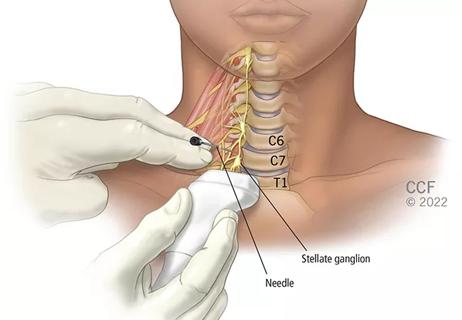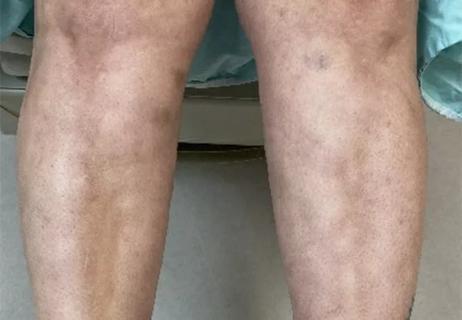Large retrospective study links sleep hypoxia to worse COVID-19 outcomes

Sleep-related hypoxia negatively affects outcomes in patients who develop COVID-19, finds an investigation from Cleveland Clinic combining case-control and observational studies. However, neither sleep-related hypoxia nor sleep-disordered breathing (SDB) was associated with increased risk of testing positive for SARS-CoV-2.
Advertisement
Cleveland Clinic is a non-profit academic medical center. Advertising on our site helps support our mission. We do not endorse non-Cleveland Clinic products or services. Policy
The findings, from an analysis of patients in the Cleveland Clinic COVID-19 Registry who had undergone a prior sleep study, were published in JAMA Network Open.
“The COVID-19 pandemic continues, and the disease remains highly variable among patients,” says the study’s senior author, Reena Mehra, MD, MS, Director of Sleep Disorders Research at Cleveland Clinic. “These findings suggest that we can improve our ability to predict who will have more severe illness and, in turn, allocate resources more appropriately,” adds the study’s first author, Cinthya Peña Orbea, MD, staff in Cleveland Clinic’s Sleep Disorders Center.
Observational studies have associated SDB and sleep-related hypoxia with risk for COVID-19 and adverse COVID-19 outcomes. In their analysis of Cleveland Clinic’s polysomnographically phenotyped cohort, Dr. Mehra and colleagues followed up on these observations and addressed two questions about the role of SDB and sleep-related hypoxia (average total sleep time with an oxygen saturation < 90% ) in COVID-19 development and progression:
The investigators accessed records of 350,710 individuals who were tested for SARS-CoV-2 at Cleveland Clinic locations in Ohio and Florida from March through November 2020. Of these individuals, 5,402 had an available sleep study record, and 1,935 of them (35.8%) tested positive for COVID-19 by RT-PCR assay.
Advertisement
In addition to COVID-19 positivity and sleep study findings, the researchers considered comorbidities associated with high risk (obesity, cardiopulmonary disease, cancer, smoking) and World Health Organization-designated COVID-19 outcomes. They postulated that the association of SDB with risk of COVID-19 positivity and poor prognosis would persist even after accounting for comorbidities via propensity score weighting.
Contrary to expectations, no SDB measures were linked to increased risk of testing positive for SARS-CoV-2. Comorbidity was common in the cohort, as most patients had hypertension, asthma or diabetes, and the average body mass index was between 34 and 36. Nevertheless, even when adjusted for the presence of comorbidities, the association between SDB and risk of COVID-19 was not significant.
In contrast, sleep-related hypoxia was clearly linked to poor outcomes among patients with COVID-19, conferring a 31% higher rate of hospitalization and mortality (adjusted hazard ratio = 1.31; 95% CI, 1.08-1.57; P = 0.005). This finding supported observations that hypoxemia (oxygen saturation < 90% despite supplemental oxygen) is associated with mortality in critically ill patients with COVID-19. The finding held even after patients receiving positive airway pressure therapy were excluded from consideration.
The results suggest that baseline sleep-related hypoxia predicts progression of hypoxia and hypoxia-related injury in COVID-19 disease. The study authors note that hypoxia potentiates inflammation and coagulation, triggers proinflammatory cytokines and promotes viral replication. In COVID-19, hypoxemia is associated with elevated inflammatory markers, including higher white blood cell counts, neutrophil counts, D-dimer levels and C-reactive protein levels.
Advertisement
“Hypoxia functions as an amplifier,” explains Dr. Mehra, “in that baseline sleep-related hypoxia is a factor in the progression of hypoxia-related injury in COVID-19. Although sleep-related hypoxia does not increase the likelihood of contracting COVID-19, it may contribute to worse outcomes as the illness evolves. It’s important that we better understand the biological pathways of sleep-disordered breathing and its relationship to COVID-19.”
The impact of sleep-related hypoxia was the same even after accounting for cardiopulmonary disease and smoking history. “Nocturnal hypoxemia may represent a component of sleep apnea-related physiologic stress that predicts worse COVID-19 outcomes,” notes Dr. Peña Orbea. She and her coinvestigators write that sleep-related hypoxia may present a more accurate picture of SDB-related physiologic stress than the apnea-hypopnea index, which does not reflect duration and severity of hypoxic exposures.
Although this was a retrospective study that considered only a single night of sleep testing, the large cohort across multiple sites and COVID-19 and sleep data registries allowed for considerable specificity of phenotyping of SDB and hypoxia, the study authors note. The clinical implications are significant, suggesting that biomarkers of inflammation mediate the relationship between SDB and COVID-19 outcomes.
“If we know that sleep-related hypoxia translates to worse COVID-19 outcomes, we can implement risk stratification strategies for early treatment of patients in this subgroup,” Dr. Mehra says. “The likely result — fewer hospitalizations and fewer deaths — could ease the strain on our healthcare systems.”
Advertisement
She adds that additional studies may be warranted to assess whether early treatment with positive airway pressure or oxygen administration can improve COVID-19 outcomes in patients with SDB.
Advertisement
Advertisement

Patients report improved sense of smell and taste

Clinicians who are accustomed to uncertainty can do well by patients

Unique skin changes can occur after infection or vaccine

Cleveland Clinic analysis suggests that obtaining care for the virus might reveal a previously undiagnosed condition

As the pandemic evolves, rheumatologists must continue to be mindful of most vulnerable patients

Early results suggest positive outcomes from COVID-19 PrEP treatment

Could the virus have caused the condition or triggered previously undiagnosed disease?

Five categories of cutaneous abnormalities are associated with COVID-19